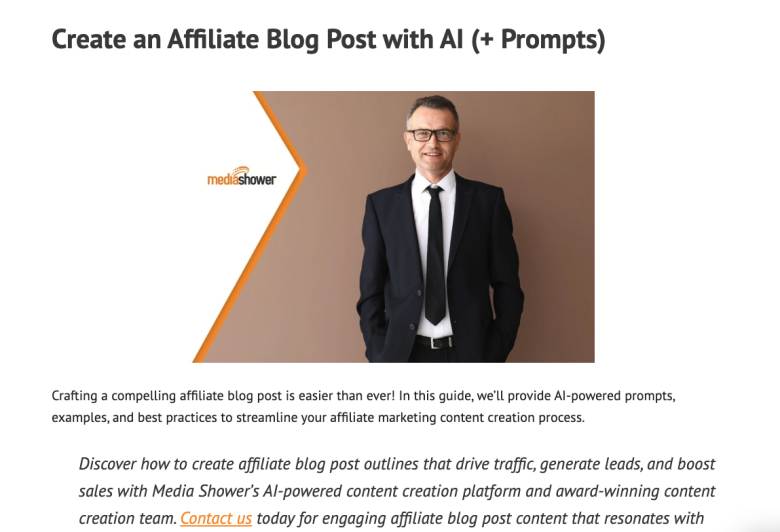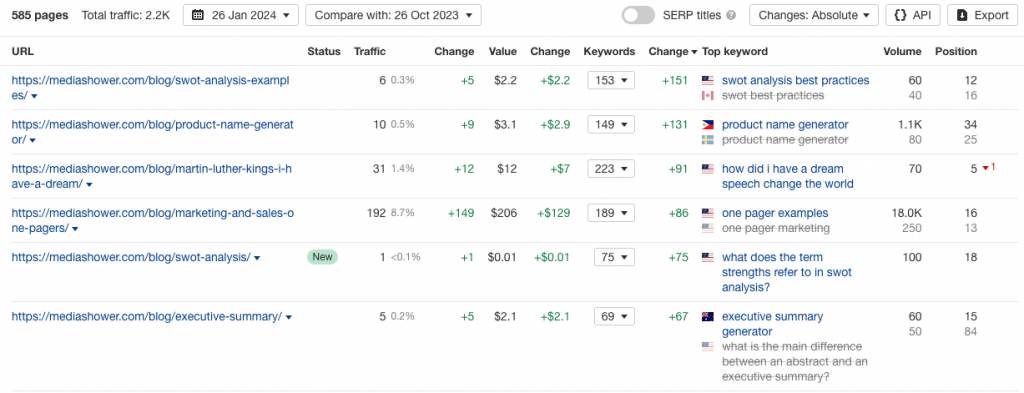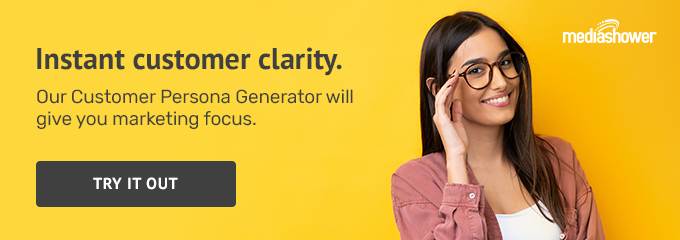
AI is Eating Marketing
Sound like an exaggeration? Trust us, it’s true.
Over the last two years, we’ve seen our clients swallow lower marketing budgets, with higher expectations. As a result, we’re increasingly seeing clients turning to AI, rather than agencies, to help them do “more with less.”
But this isn’t AI’s fault. It’s the same progress of technology that we’ve seen repeatedly, decade after decade. Whether its email, social media, or the Web, new technologies change the way marketing is done, making us more efficient … but not without some growing pains.
Many people see AI as a threat, and it is: to the current way of doing things. But every threat is also an opportunity. Two years ago, we decided to embrace the opportunity.
Instead of complaining about AI, or banning our team from using it, we experimented with the technology. Instead of getting furious, we got curious.
In so doing, we found that AI is an accelerant, rather than a replacement, for human creativity. And we rebuilt our Media Shower platform with this philosophy, evolving our product into a suite of powerful AI tools for marketers.
In this guide, we’ll share our AI marketing journey with you, and key takeaways for your business.
The Story of the Media Shower Platform
Ten years ago, we built the original Media Shower marketing platform with a simple idea: we could streamline the process of creating marketing materials. Blog posts, landing pages, ebooks: we wanted one place our clients could order it all, with an award-winning creative team delivering best-quality work.
The platform was a huge success: to date, we’ve created over 100,000 pieces of content for 500+ clients. Our marketing content, combined with our marketing expertise, consistently drives more traffic, more leads, and more sales for clients of all shapes and sizes.
Then came AI.
Many marketers discovered they didn’t need content at the same scale: they could draft their marketing materials using a tool like ChatGPT. We were forced to pivot, as so many marketers and companies are doing today.
Our question became, how could we use AI to help our clients do marketing better?
Over the course of two years, we experimented with AI, launching and developing prototypes, until finally we found an approach that worked: specialized AI “assistants” to help marketers draft top-quality assets – and our award-winning creative team to help polish and perfect them into marketing gems.
It’s not just an AI platform. It’s not just an agency. It’s both. And more.
For a taste, click below to try out AI-powered Customer Persona Generator.
How You Can Pivot Toward AI
We’ll walk you through the stages, from our first baby steps into AI, through the final platform launch. While your business is different, the basic stages will probably be similar.
Create “Minimum Viable Products”
In the startup world, entrepreneurs often talk about MVPs, or “minimum viable products.”
If you have an idea for a new web-based product, for example, what is the most basic version that you can launch and test? Strip it down to its core set of features, then try it out.
This goes against the culture of many companies, who believe a product has to be fully-baked, with all the bells and whistles. While we don’t want to launch junk, the idea is, how bare-bones can you make a product to see if customers like it?
With AI, which is so new and experimental, the MVP approach is helpful. Often you’ll see customers find some completely different use for your product, or it doesn’t work at all, or (best case) it’s an amazing success.
Our MVP was a simple version of our AI assistants that we began to launch on a series of pages, helping marketers draft common materials like web pages, marketing briefs, or social media posts.
Then we waited. And watched.

An example of one of our Minimum Viable Pages.
Monitoring, Measuring, then Doubling Down
 Some of our early winners (courtesy AHREFs)
Some of our early winners (courtesy AHREFs)
The advantage to launching multiple MVPs was that we could see which ones were working. As we watched our page traffic, we saw that some pages rose to the top, while others seemed to stagnate.
We threw a bunch of stuff against the wall to see what stuck. And once we found the stickiest MVPs, we doubled down on our winners, by optimizing and improving those pages:
- Adding Examples: Most marketers were looking for shortcuts in creating complex marketing materials. On our “Marketing Plan” page, for example, if we could include examples or copy-and-paste templates, it helped them get started – and our AI assistant did the rest.
- Adding AI Proof: We demonstrated how to use our AI assistants through real-world mockups. That way, the reader didn’t have to take an imaginative leap to understand what they could do with AI.
- Improving AI Assistants: The most important optimization was to continually refine and improve our new AI Assistants by observing how people used them, and discussing as a team how we could make them better.
Improving Our AI Assistants
This final optimization is the most important.
AI is never done; instead, it involves continually training and optimizing our models so that they deliver better results for marketers.
What we found was that standard models like OpenAI do not do a great job for marketers. What’s more, anyone using those all-purpose tools for marketing will sound exactly the same as everyone else using those models.
For example, try asking ChatGPT to develop a content brief. It’s not great, and it’s exactly the same as everyone else’s content brief.
We began training our Content Brief Generator with our best practices on content briefs, based on what we’ve learned creating 100,000 pieces of content on our platform. And that made all the difference.
We also learned that most marketers needed help writing the prompt in the first place: even seasoned AI experts don’t know everything they need to tell the AI engine to get the best results. So we used a step-by-step approach to ask users the critical information to deliver the best content.
You can try a few of them here:
One of our key learnings over the years is that a great content brief leads to great content; but typically these briefs take hours to create. This AI assistant gets you to a great content brief in minutes.
The Marketing Content Idea Generator
This AI assistant uses simple Q&A to help you generate dozens of great content ideas, like having a brainstorming assistant or marketing creative team at your beck and call.
Most marketers work at the top of the funnel (awareness), and our Top of Funnel AI Assistant helps create ideas for that early-stage marketing. We’ve also made companion AI assistants for Mid-Funnel and Bottom-Funnel content.
Productizing the AI
First, we began to experiment with AI. Then we launched MVPs, measured and monitored the results, doubled down on our winners, then regularly refined and improved.
Then it was time to roll them into a product.
We have completely rebuilt the Media Shower platform to incorporate these top-quality AI assistants. You can get access to dozens of AI “helpers” that can draft all your marketing materials – from marketing plans to blog posts – reducing work that might take hours of effort into minutes.
But here’s the twist: through the platform, these tools are plugged into our agency. When you’re happy with an AI draft, just click “Place Order” to send it to our creative team to do all the things AI can’t do: design, videography, or making it print-ready.
It’s not just an agency, and not just an AI tool. It’s both. And more.
Our Results
Since we started our AI journey, our search rankings have exploded, as visitors are sticking to our website more than bouncing back to Google. Along with the increased SEO, we saw an increase in leads by 500%.
 The increase in organic SEO keywords on our AI pages (source: AHREFS)
The increase in organic SEO keywords on our AI pages (source: AHREFS)
The Alchemist Behind the AI
Paula Clark, our AI prompt guru, has an incredible passion for the technology.
“I started as a medical transcriptionist,” Paula says, “and making good money doing it. Then a new technology came along: voice recognition. Now that the computer could transcribe medical memos automatically, medical transcriptionists saw their pay cut in half, practically overnight. So as AI is taking over writing jobs, I saw the same situation.”
This time, Paula decided to embrace the new tech rather than be left behind. She has jumped into this space with “open arms” precisely because it has allowed her to learn new technical skills while leveraging her core expertise: writing.
Paula found that AI prompt engineering requires a unique mix of skills, something like a cross between computer programming and traditional writing. For all the jobs that AI might displace, new jobs will be created, like prompt engineers.
As she moved into prompt engineering, Paula realized there were specific ways we needed to train our AI models:
- Deep Research: AI learns by example, but the larger models trended towards generic responses that didn’t reflect our marketing best practices. We needed to train them on our marketing experience using as many examples as we could feed them.
- Pain Points: Paula pioneered several prompt-writing techniques (including examples, role-play, and problem-solution approaches) to help our prompts better understand the context in which we presented the assistant and how the user interacted with them.
- Minimal Effort: Early in the process, we realized users wanted results quickly. Paula found clever ways to minimize user interaction so they feel more like a responsive assistant and less like an interview.
Try the Media Shower Platform for Yourself
Our team’s evolution of the Media Shower platform has been a labor of love and skill, and it’s still ongoing. We add new assistants, pages, and features every month.
But don’t take our word for it. If you’re a busy marketer ready to finally embrace AI to accelerate your creativity and capabilities, start with a free trial of the Media Shower platform.
